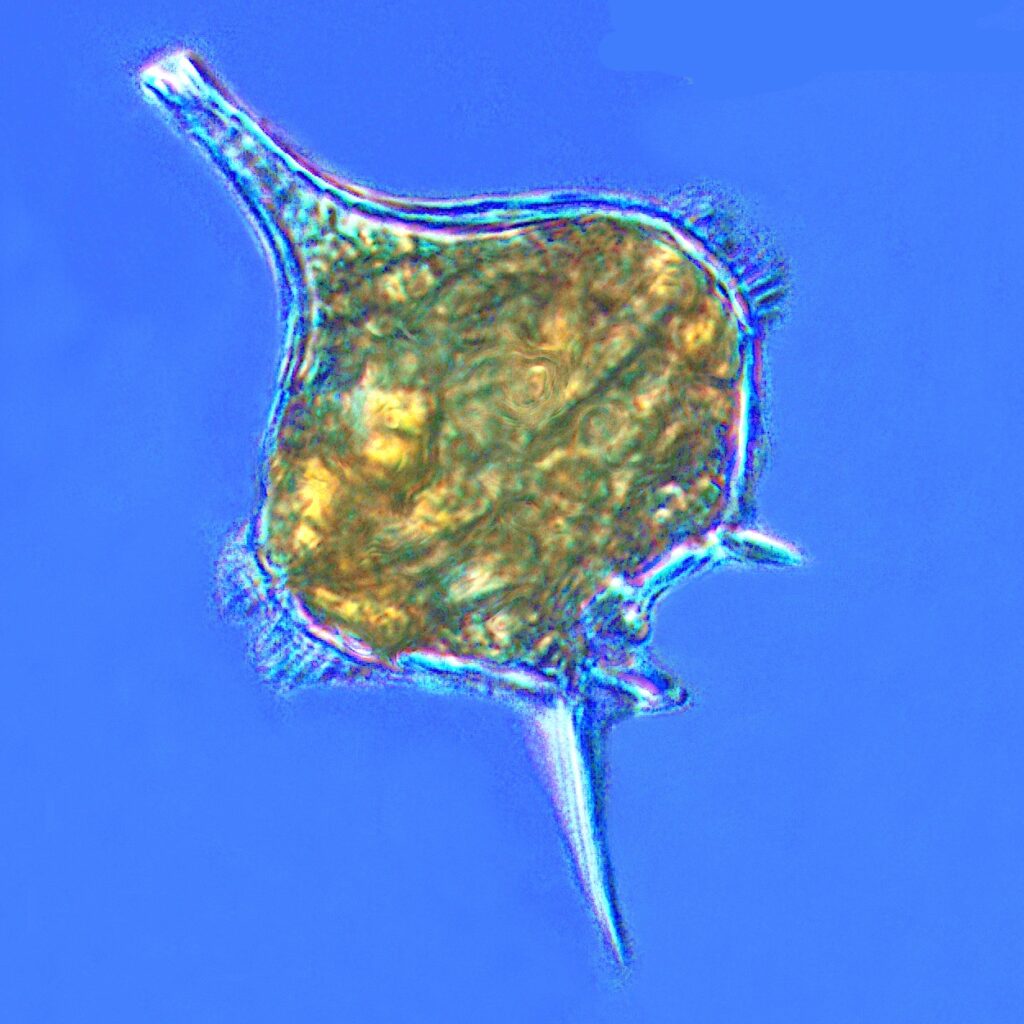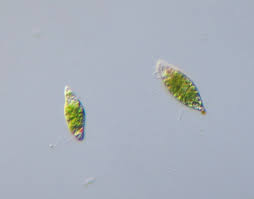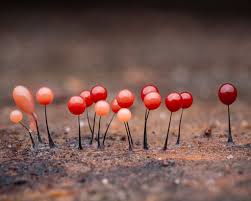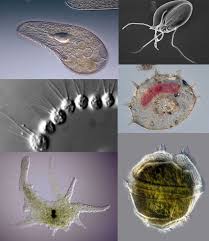KINGDOM: Protista
This kingdom formed a link between kingdom Monera on one hand and other three kingdoms i.e. Plantae, Fungi and Animalia on the other hand. Protistians are ancestors of all multicellular eukaryotes (plants, fungi, animals).
Kingdom: Protista includes-
Protista
↓
(1) Autotrophic (2) Consumer (3) Protozoans
or
e.g Dinofagellates e.g. Cellular slime e.g.Zooflagellates
Diatoms moulds Sarcodines
Euglenoids Acellular slime Sporozoans
moulds Ciliates
General Characteristics of Protista:-
(1) Unicellular, some are colonial without much cellular differentiation.
(2) Mostly aquatic organisms.
(3) Cells may possesses cellulosic cell wall.
(4) Flagella and cilia have (9+2) pattern of microtubule organization consisting of tubulin protein.
(5) Movement of pseudopodia, flagella or cilia where ciliary mode is fastest.
(6) Mode of nutrition may be photosynthetic (holophytic). Holozoic (ingestion), saprobic or parasitic (absorptive). Some heve mixotrophic nutrition (photosynthetic and saprobic) as in Euglena.
(7) Reproduction occurs by asexual and sexual means.
(8) Life cycle is of two types:-
(i) Showing zygotic meiosis
(ii) Showing gametic meiosis
- Photosynthetic in Protists:-
These are populary called protistan algae. Protistan algae constitute the major portion of the phytoplanktons.
Diatoms:-
Diatoms are golden brown photosynthetic protistis and are called Chrysophytes (including both diatoms and desmids). They are both aquatic and terrestrial. Some are marine. Their important characters are:-
(i) These are microscopic organisms possessing varying colours.
(ii) They are basically unicellular, but may form pseudofilament and colonies, lacking flagella except in the reproductive stage. They may be free floating (phytoplanktonic) , remaining afloat on surface of water due to presence of light weight lipids.
(iii) The cell wall is impregnated with silica to form transparent siliceous shell, known as frustules.
(iv) They are responsible for almost 50% of the total organic matter synthesized in the biosphere.
(v) They are very good indicators of water pollution.
(vi) Diatoms are predominantly aquatic, inhabiting both marine and freshwater environments.
(vii) They play a critical role in the carbon cycle through photosynthesis, producing a significant portion of the world’s oxygen. Diatoms have a high diversity, with over 100,000 species documented.
(viii) They reproduce primarily asexually through binary fission, though sexual reproduction also occurs under certain conditions.
(ix) Their fossilized remains form diatomaceous earth, utilized in various industrial applications.
(x) Diatoms are also valuable in paleoclimatology, helping reconstruct past climatic conditions based on their preserved silica shells in sediment records.
(xi) Auxospores:- Zygotes formed during sexual reproduction in in Diatoms is called Auxospore, common examples of diatoms are Triceratium, Melosira, Navicula and Cymbella.
Dinoflagellates:-
Dinoflagellates are golden brown photosynthetic protists, belonging to class Dinophyceae (Pyrrophyta). They are mainly marine, though few are fresh water forms. Their important characters are:-
(i) They are unicellular, motile, biflagellated.
(ii) The is enclosed by a rigid coat called theca or lorica consisting of 2
to many articulated or sculptured plates of cellulose and pectin, hence are called armoured Dinoflagellates.
(iii) Reserved food is carbohydrate and oils.
(iv) Reproduction is commonly asexual and occurs through cell division.
(v) Isogamous and anisogamous sexual reproduction is reported from dinoflagellates e.g Ceratium.
(vi) Life cycle involves zygotic meiosis (Ceratium, Gymnodinium).
Gametic meiosis occurs in Noctiluca.
(vii) They possess two dissimilar flagella, one wrapped around a transverse groove (cingulum) and the other trailing, enabling unique motility patterns.
(viii) Many species exhibit bioluminescence, emitting light when disturbed, contributing to marine phenomena like “phosphorescent seas.”
(ix) Some species are known for harmful algal blooms (HABs),
producing toxins that can impact marine life and human health.
(x) They are significant in marine ecosystems, contributing to primary production and serving as key components in the food web.

(iv) The cell bears a single long type flagellum (stichonematic) arising at the anterior end. Actually there are two flagella but one of these is reduced. The longer flagellum has two branches at the base each having its own basal granule. In the area of union of two flagella is present a photosensitive paraflagellar body
(v) Myonemes are oblique but parallel arranged strips in pellicle. Euglenoids perform creeping movement of contraction and expan with the help of myonemes which is called metaboly or euglenoids movement.
(vi) Stigma or an eye spot is attached to the membrane of the reservoir at the level of paraflagella body and along with it seems to be involved in perception of light stimulus. It contains photosensitive red-orange pigment called astaxanthin.
(vii) Single large nucleus lies near the centre of the protoplast.
(viii) Reserve food material is paramylon.
(ix) Flagella: They possess one or two flagella emerging from an anterior pocket, aiding in motility.
(x) Pellicle: Instead of a rigid cell wall, euglenoids have a flexible pellicle composed of protein strips beneath the plasma membrane, allowing shape changes.
(xi) Photosynthesis: Many euglenoids contain chloroplasts with chlorophylls a and b, enabling photosynthesis, though some species are heterotrophic
(xii) Mixotrophy: Euglenoids can switch between autotrophy (photosynthesis) and heterotrophy (ingesting organic matter) based on environmental conditions
(xiii) Reproduction: Euglenoids reproduce asexually through longitudinal binary fission; sexual reproduction has not been observed.
(xiv) Habitat: They are predominantly found in freshwater environments, though some species inhabit marine and brackish waters.
Euglenoid (Euglena-like):-
It is a group chlorophyllous flagellate protists. Largest genera being Euglena amongst them.
(i) Euglenoids are unicellular, flagellate protists found in water or damp soil. Majority of them are fresh water organisms found in stagnant water.
(ii) Cell wall is absent but a covering periplast or pellicle is present which is proteinaceous (elastic) in structure.
(iii) Locomotory organs are flagella.
(iv) The cell bears a single long type flagellum (stichonematic) arising at the anterior end. Actually there are two flagella but one of these is reduced. The longer flagellum has two branches at the base each having its own basal granule. In the area of union of two flagella is present a photosensitive paraflagellar body
(v) Myonemes are oblique but parallel arranged strips in pellicle. Euglenoids perform creeping movement of contraction and expansion with the help of myonemes which is called metaboly or euglenoids movement.
(vi) Stigma or an eye spot is attached to the membrane of the reservoir at the level of paraflagella body and along with it seems to be involved in perception of light stimulus. It contains photosensitive red-orange pigment called astaxanthin.
(vii) Single large nucleus lies near the centre of the protoplast.
(viii) Reserve food material is paramylon.
(ix) Flagella: They possess one or two flagella emerging from an anterior pocket, aiding in motility.
(x) Pellicle: Instead of a rigid cell wall, euglenoids have a flexible pellicle composed of protein strips beneath the plasma membrane, allowing shape changes.
(xi) Photosynthesis: Many euglenoids contain chloroplasts with chlorophylls a and b, enabling photosynthesis, though some species are heterotrophic
(xii) Mixotrophy: Euglenoids can switch between autotrophy (photosynthesis) and heterotrophy (ingesting organic matter) based on environmental conditions
(xiii) Reproduction: Euglenoids reproduce asexually through longitudinal binary fission; sexual reproduction has not been observed.
(xiv) Habitat: They are predominantly found in freshwater environments, though some species inhabit marine and brackish waters.

(2) Slime moulds or consumer-decomposer protists:-
They were included in class myxomycetes of fungi in two-kingdom classification. They were called mycetozoan by DeBary as they are closely related to animals. Mycologists include them in gymnomycota. Because of their nature they are called protistan fungi.
General characteristic of the slime moulds are:-
- They usually free-living, creeping over debris like fallen leaves and rotting logs of wood.
2. They have naked protoplast, not covered by any cell wall in vegetative stage.
3. They lack chlorophyll and have saprobic or phagotrophic mode of nutrition.
4.Slime moulds are unique protists found in moist, decaying organic matter.
5. They exhibit characteristics of both fungi and protozoa but lack chitin in their cell walls.
6.Their life cycle includes a motile, amoeboid stage called a plasmodium.
7. The plasmodium moves to find food, engulfing bacteria and organic material through phagocytosis.
8. Slime moulds play a crucial role as decomposers, breaking down dead plant material.
9.This decomposition recycles nutrients back into the ecosystem, supporting soil health.
10.They contribute to plant growth by enriching the soil with nutrients.
11. Slime moulds can form fruiting bodies that produce spores for reproduction.
12. These spores allow slime moulds to spread to new environments.
13.Their ability to switch between unicellular and multicellular forms aids in studying cellular behavior.

(3) Protozoans
These are unicellular organism with heterotrophic nutrition. They are belived to be primitive relatives of animals. There are four groups of protozoans:
Amoeboid protozoan | Flagellated protozoans | Cilated protozoans | Sporozoans |
1. Habitat and habit Fresh water, sea water or moist soil mostly free living, few parasites. |
Free living (aquatic) or parasitic |
Fresh water or marine, few parasite. |
All endoparasites |
2. Locomotory structure Pseudopodia (false feet) |
Flagella |
Cilia |
Absent |
3. Special feature Silica shells in some forms. |
Rare sexual reproduction with diverse types of association- commensal,symboint, parasitic. |
Possess definite region of ingestion (gullet) and (egestion). | Infectious spore- like stage is present in life cycle. |
4. Example and diseases Amoba, Entamoeba (dysentery) |
Trypanosoma (sleeping sickness) |
Paramoecium |
Plasmodium (most notorious causing malaria) |

4 thoughts on “KINGDOM: Protista”